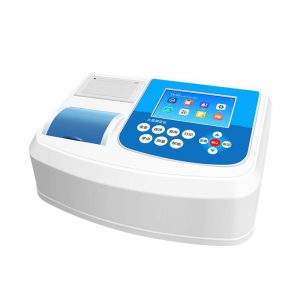Acht Arten von Routinetestindizes für Brunnenwasserqualitätstests
Die Prüfung der Brunnenwasserqualität umfasst in der Regel mehrere Indikatoren, Die Prüfung der Brunnenwasserqualität umfasst in der Regel mehrere Indikatoren, eight common indicators include pH value, turbidity, gelöster Sauerstoff, conductivity, total suspended solids, Härte, Schwermetalle, bacteria and microorganisms, generally using multi-functional water quality testing instruments to detect.

Acht Arten von Routinetestindizes für Brunnenwasserqualitätstests
The following are common indicators and their eligibility requirements:
PH Wert: The pH value reflects the acidity and alkalinity of the water body and is usually considered to be in the appropriate range between 6.5 Und 8.5.
Turbidity: Turbidity reflects the content of suspended matter in water and is generally required to be less than 5 NTU (turbidity unit).
Gelöster Sauerstoff (TUN) : Dissolved oxygen is the amount of oxygen dissolved in water, which is usually required to be above 5 mg/L to support the survival of aquatic organisms.
Electrical conductivity: Electrical conductivity measures the amount of electrolytes in a body of water and is also an indicator to assess the salinity of water. Specific requirements will vary according to use and region.
Total suspended solids (TSS) : Total suspended solids is the total amount of all suspended solid particles in water, which is generally required to be less than 10 mg/L.
Härte: Hardness reflects the content of metal ions such as calcium and magnesium in water and is usually reported as CaCO3 (calcium carbonate). Hardness requirements vary by region and application.
Schwermetalle: Common heavy metals include lead, Quecksilber, Cadmium, Chrom, usw., whose content must be below the safety limits stipulated by national or international standards.
Acht Arten von Routinetestindizes für Brunnenwasserqualitätstests
Bacteria and microorganisms: includes the presence or absence of indicator microorganisms such as E. coli and Salmonella, which are subject to strict testing requirements and should not normally be present in drinking water.
To ensure that well water is qualified, indicators must be evaluated against local regulations and standards. When conducting tests, reliable laboratories or professional institutions should be selected for testing, and correct sampling and storage methods should be followed. If the water quality index is outside the eligible range, corresponding water treatment measures such as filtration, disinfection or reverse osmosis may be required to ensure the safety and suitability of well water.
